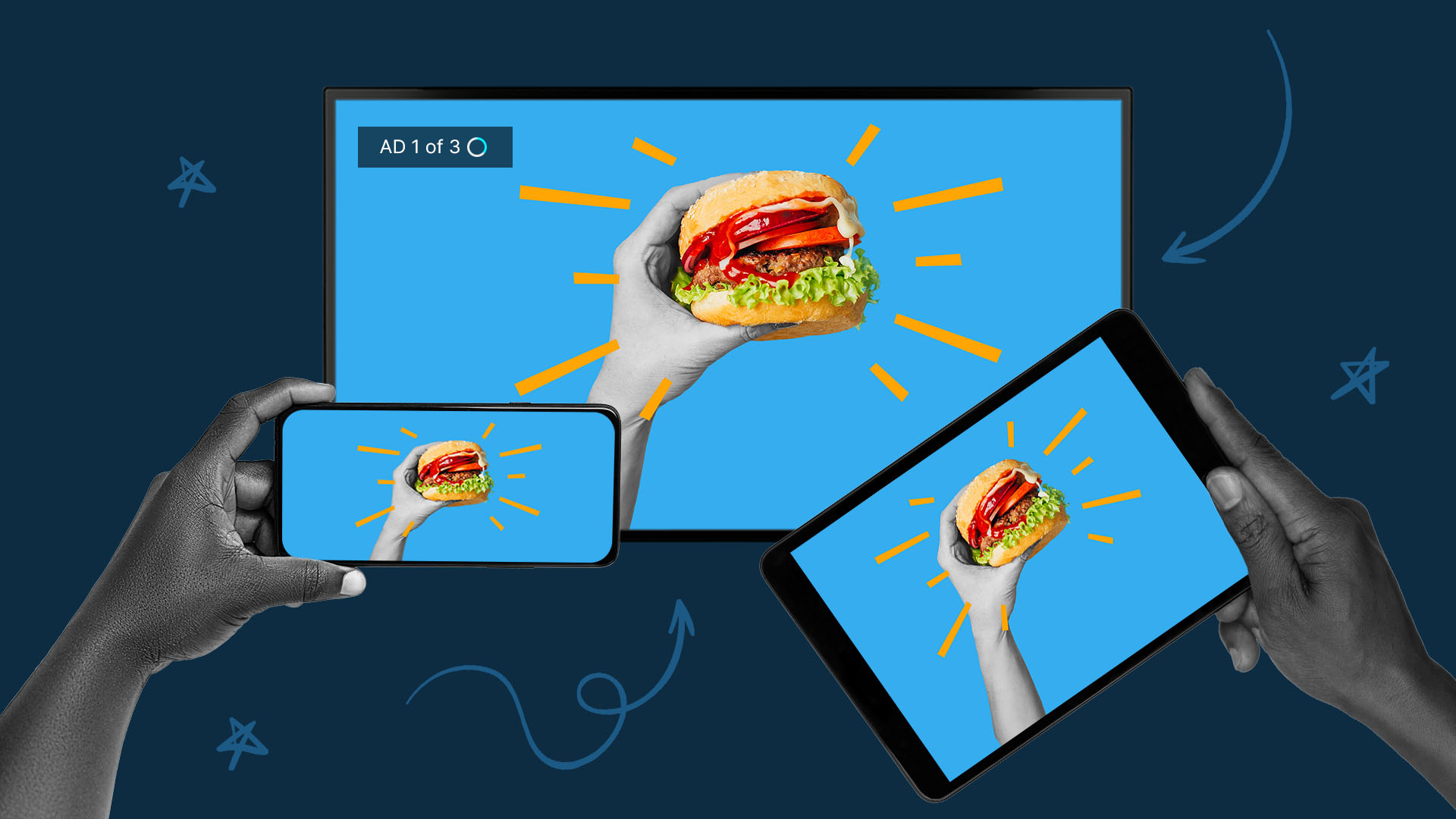TikTok vs Facebook: Key Differences for Brands to Know

TikTok and Facebook are two of the world’s most successful social media platforms. The two have more than 1 billion active monthly users and around 3 billion monthly active users, respectively. Both platforms are great for marketing, allowing you to connect with potential customers using dynamic, memorable videos.
Here, we’ll break down TikTok vs. Facebook through users, audience behaviors, and more to help you make more informed decisions on representing your brand through video.
What Is TikTok?
A relative newcomer to the social media scene, TikTok is a short-form video platform that allows users to generate and post content. Videos generally range from three seconds to three minutes in length, which gives you the flexibility to be creative. You can use filters and sounds to enhance your videos and make them more engaging. You can also tag followers, influencers, and other partners in your videos to broaden your reach.
Audience Demographics
You may still think that TikTok is limited to younger Millennials and members of Gen Z, but the platform has a wide range of users. While the platform skews younger, 13.5% of its users are over 45. More than half of its users are female, and most live in the United States.
But remember: these numbers won’t stay the same forever. When it comes to social media user demographics, things change fast, so you’ll need to keep up with the evolving trends.
User Behavior
Many TikTok users find new topics and brands on the platform, with 81% stating that the platform influenced their decision to buy something. Most videos on TikTok are short and funny, allowing users to quickly engage and share them with friends. (Perhaps for that reason, the average TikTok user session is estimated at around 1.5 hours.) The platform briefly flirted with long-form content, expanding its maximum video length to 10 minutes, but they’ve since rolled this back a bit, limiting content recorded on the app to three minutes, while still allowing users to upload a 10-minute video production.
Types of Content
Users have free reign to make their TikTok video ideas as creative as possible. Since most of its content is user-generated, the more polished a video is, the less authentic it feels. You can create videos based on trending sounds, hop on the most recent TikTok challenge, or lip-sync to a popular song. For brands using the platform, the goal is to create videos that look organic and blend in with others on the platform.
Tools for Business
In 2020, as TikTok’s popularity was blowing up, the platform launched TikTok for Business. This tool includes Ads Manager, which helps you launch affordable, targeted ads through the platform. With it, you can choose target audiences by location, demographics, and viewing behaviors. Use a content calendar to brainstorm and schedule posts based on your marketing goals.
TikTok offers a library of templates if you’re looking for a place to start on the app. It also offers a database of resources such as best practices, popular hashtags, and other tools for inspiration.
The TikTok Algorithm
Like other social media platforms, the TikTok algorithm helps connect viewers with content they’ll likely enjoy. Using their likes, viewing preferences, searches, and more, TikTok brings new, similar content to users via their For You page.
If you run a targeted ad to users based on interests, it may show up on the For You pages of people who have liked and commented on similar content. Once users interact with one video, TikTok feeds them similar content until it understands their likes and dislikes. Eventually, the algorithm leads to a highly curated experience of engaging content.
What Is Facebook?
Facebook is one of the earlier social media platforms launched on college campuses in the mid-2000s. The platform has grown to nearly 3 billion monthly active users and remains one of the most popular social networks.
Since its inception, Facebook has continued to evolve with its users, which is one way the platform has stayed atop the industry for so long. You can post videos, host live chats and events, and connect with audiences using polling and other interactive tools. Over three million companies currently use Facebook to connect with new customers through advertisements.
Audience Demographics
Like with TikTok, it’s easy to make assumptions about Facebook. Without looking at the research, you might assume this platform is home to older users. But young adults make up a majority of users, with 42% being between ages 18 and 34. Across age groups, more men than women use Facebook to connect. The majority of Facebook users live in India, followed by the United States and Indonesia.
User Behavior
When comparing Facebook vs TikTok, one of the biggest differences lies in how users engage with the platform. TikTok is exclusively used for video, while Facebook users watch videos, engage with posts, and interact using Messenger. Businesses on Facebook use the platform to send 10 billion messages to customers each month, making it a valuable customer service tool.
On average, Facebook users spend 33 minutes a day on the platform, interacting with family and friends, sharing videos and photos, and staying up to date on events.
Types of Content
When Meta bought Instagram, the company introduced Reels across both Instagram and Facebook, a short-form video platform made to rival TikTok. Reels last between 3 and 90 seconds and are typically entertaining and engaging. If you’re using Reels, share creative videos that resonate with your audience. With Facebook Reels, you can also post status updates, share photos, and promote special events or sales on your page.
Tools for Business
Facebook’s Meta Ads Manager allows you to deploy digital marketing on Facebook, Instagram, and Threads in one location. With it, you can launch targeted ad campaigns based on demographics, location, and user behavior. This feature also gives you detailed insights into user behavior that help you identify which trends will appeal most to your target audience. Use the analytics tools to tweak your marketing strategy based on previous results.
The Facebook Algorithm
Like other aspects of the platform, Facebook’s algorithm has evolved, and about 15% of content is recommended to users based on their interests and how they interact with other posts. The algorithm works with machine learning to assess a user’s actions on the site and recommend content that will likely appeal to them. With the algorithm, your sponsored posts should be more likely to land among users who will respond.
Summary of Key Differences
The main difference between TikTok and Facebook is the nature of how people use each site. While TikTok does have messaging and commenting capabilities, most people use the app for entertainment. Conversely, most of Facebook’s users still use the platform primarily for its social aspects, including connecting with family and friends to share content that interests them.
Facebook also lets users host live streams, which are interactive videos that allow you to engage directly with your audience. While TikTok also offers live-streaming and is working to expand those capabilities, Facebook is currently the third most popular live-streaming platform (behind YouTube and Twitch).
The Importance of Using TikTok and Facebook
Using TikTok and Facebook together as part of your social media video strategy lets you appeal to a wider audience. Each platform appeals to users in different ways, allowing you to target users on different steps of the customer journey. For example, since TikTok is a great way for users to discover new topics, use it to build your awareness. Since Facebook is a key customer service tool, use it to create content for existing customers.
Make Social Media Videos at Scale
Making social media videos at scale can be overwhelming, but you don’t have to do it alone. To be effective, you need to create content specific to each platform.
Make sure your TikTok videos and Facebook Reels seem native to the platform and don’t distract from the user experience. (In other words, don’t just download your videos from one platform and crosspost them to the other — usually this comes with a watermark logo of the original source platform that users can spot right away.) If you’re not sure where to start, we’re here to help. At QuickFrame, we can connect you with makers and production teams around the world who are ready to create custom video content for your brand.
Contact us today to get started with Facebook video production and TikTok video production.
TikTok vs. Facebook: Final Thoughts
With the volume of social media platforms available, you may be tempted to stick with the platforms you’re already using. You may have written off TikTok because you thought it was just for teens and young adults. You might have ditched Facebook because you thought it was turning into a ghost town.
But every brand needs to (at least) consider all available options. Both TikTok and Facebook can play a vital role in helping you attract new potential customers and connect with your audience. When you understand how users are engaging on each platform, you can update your content and make sure each platform serves its purpose as part of your overall digital marketing strategy.
Do More with Video
Learn how we can help you produce more quality videos affordably and at scale.


